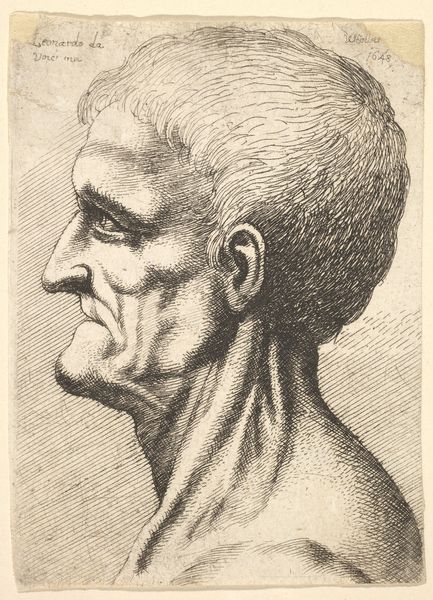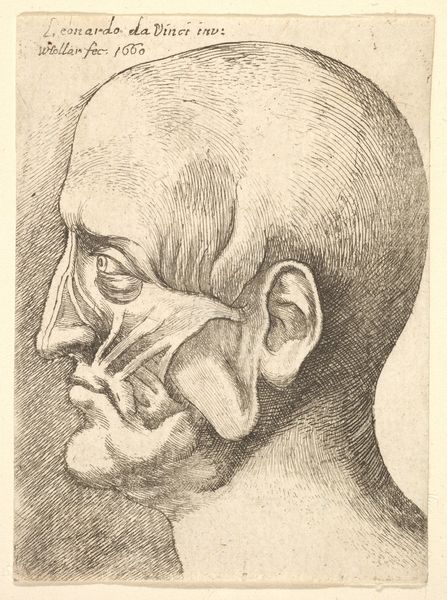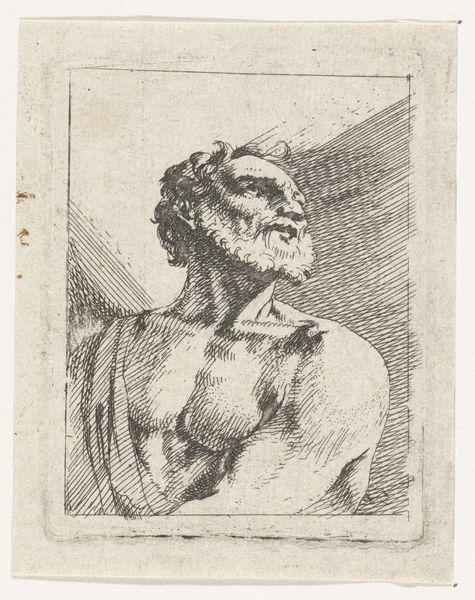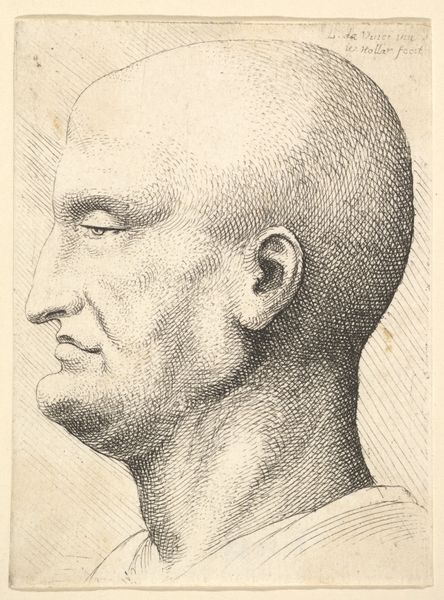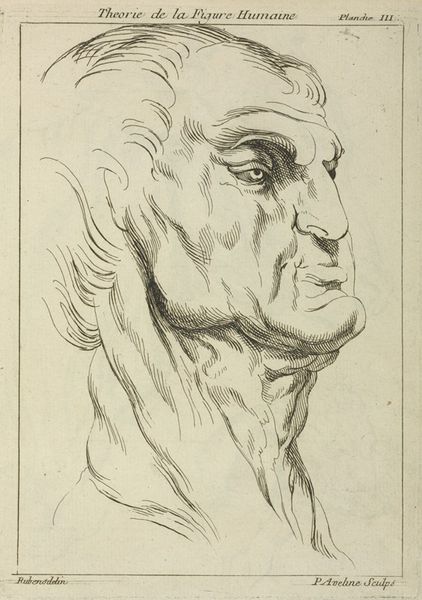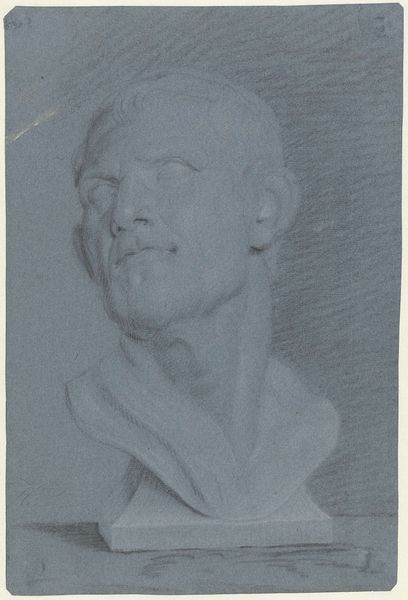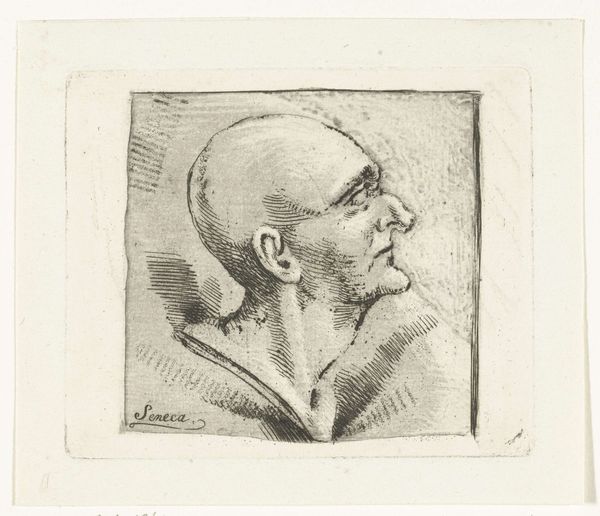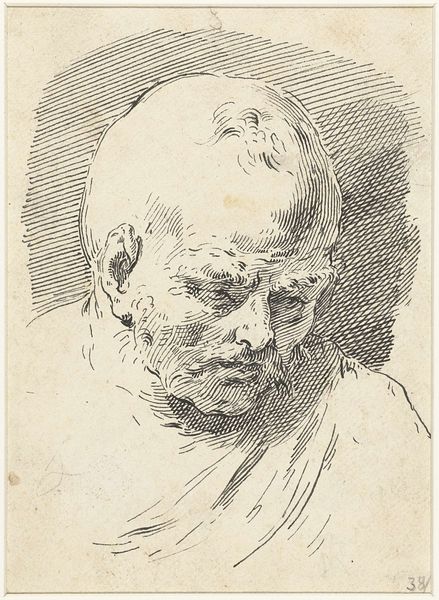
engraving
#
portrait
#
baroque
#
caricature
#
classicism
#
portrait drawing
#
history-painting
#
engraving
#
portrait art
Dimensions: height 150 mm, width 108 mm
Copyright: Rijks Museum: Open Domain
Jan de Bisschop made this portrait bust of Emperor Galba in the 17th century using pen and brown ink, a relatively simple method of production. De Bisschop employed hatching and cross-hatching techniques to construct form and volume, using linear strokes to build up darker areas and suggest the play of light on the Emperor's face and drapery. The material influences the appearance, with the ink allowing for fine lines and tonal gradations that capture the texture and weight of the marble sculpture. The controlled application of ink allows for a high level of detail, imbuing the artwork with a sense of realism and depth. The choice of ink as a medium reflects a connection to a tradition of drawing and printmaking, where the artist skillfully manipulated the ink to create a visually compelling representation. This piece blurs the lines between drawing, printmaking, and sculpture, as de Bisschop engaged with historical creative practices, underscoring the importance of materials and making in understanding the artwork's full meaning.
Comments
No comments
Be the first to comment and join the conversation on the ultimate creative platform.
